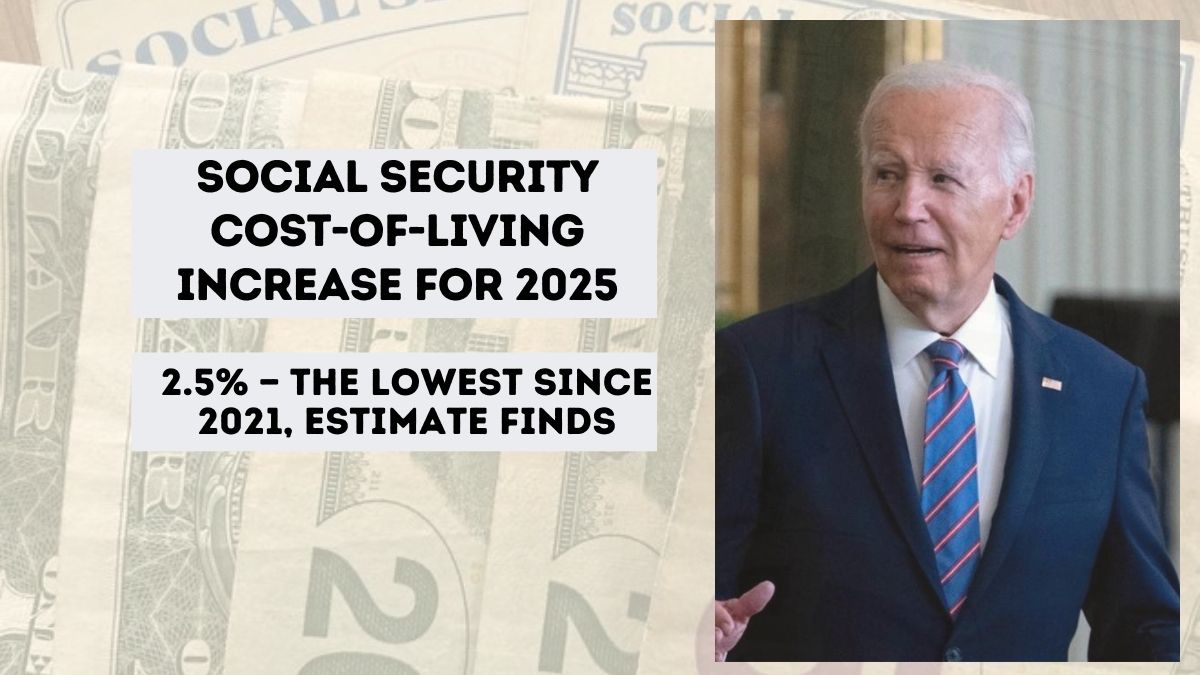Social Security cost-of-living beneficiaries have enjoyed significant adjustments (COLAs) in recent years, largely driven by record-high inflation rates. However, the outlook for 2025 suggests that the increase might be less generous than in previous years.
Understanding Recent Trends and Future Predictions
The cost-of-living adjustment (COLA) for Social Security benefits is designed to help beneficiaries keep pace with inflation. According to Mary Johnson, an independent analyst with expertise in Social Security and Medicare, the projected increase for 2025 is estimated to be around 2.5%. This anticipated adjustment is a noticeable drop from the higher increases seen in recent years.
Historical Overview of COLAs
In 2024, more than 71 million Americans, including Social Security and Supplemental Security Income (SSI) recipients, received a 3.2% cost-of-living adjustment. This followed a substantial 8.7% COLA in 2023, the highest increase in four decades. Before that, in 2022, there was a 5.9% COLA, which was also notably high at the time.
Recent Social Security COLAs
| Year | COLA (%) |
|---|---|
| 2022 | 5.9% |
| 2023 | 8.7% |
| 2024 | 3.2% |
If the 2.5% increase for 2025 is confirmed, it would represent an average adjustment based on historical data. However, this estimate is subject to change as the Social Security Administration (SSA) is set to announce the official COLA in October, incorporating the latest government inflation data for September.
Factors Influencing the Social Security Cost-of-Living Adjustment
Several factors impact the net amount retirees receive from Social Security, particularly during periods of high inflation. These include taxes on Social Security benefits and Medicare Part B premiums.
Taxes on Social Security Benefits
A significant factor affecting Social Security benefits is their taxation. Up to 85% of Social Security benefits may be subject to federal income taxes based on the recipient’s combined income, which is calculated as half of Social Security benefits plus total adjusted gross income and nontaxable interest.
Taxable Social Security Benefits
| Combined Income (Single Filer) | Taxable Percentage |
|---|---|
| $25,000 – $34,000 | Up to 50% |
| Over $34,000 | Up to 85% |
For individual tax filers with a combined income between $25,000 and $34,000, up to 50% of their benefits may be taxable. If their combined income exceeds $34,000, up to 85% of benefits could be taxed. Similarly, for married couples filing jointly, these thresholds are $32,000 to $44,000 for 50% taxation and above $44,000 for 85%.
Former President Donald Trump has proposed eliminating taxes on Social Security benefits as part of his campaign platform. His plan suggests that ending these taxes could result in deficits for the Social Security and Medicare Hospital Insurance trust funds, potentially increasing by $1.6 trillion to $1.8 trillion by 2035.
Experts, including Alicia Munnell from the Center for Retirement Research at Boston College, argue that while eliminating taxes on Social Security benefits may not be beneficial, restructuring the tax system with inflation-indexed thresholds could be a more effective approach. The current tax thresholds have not been adjusted for inflation, leading to more beneficiaries being taxed over time.
Read Also:- September Social Security Payments Update: Dates for the Final Two Payments to Retirees
Rising Medicare Part B Premiums
Another significant factor affecting Social Security beneficiaries is the cost of Medicare Part B premiums. Many retirees have these premiums deducted directly from their Social Security checks. Medicare Part B covers physician visits, outpatient hospital care, and some home health services.
Medicare Part B premiums increase by approximately 5.5% per year, while Social Security cost-of-living adjustments average around 2.6% annually. This discrepancy means that the cost of Medicare premiums consumes an increasingly larger share of Social Security benefits.
Growth in Medicare Part B Premiums vs. Social Security COLAs
| Period | Medicare Part B Premium Growth | Social Security COLA Growth |
|---|---|---|
| 2005-2024 | 109.9 percentage points | 52.5 percentage points |
Over the past two decades, Medicare Part B premiums and deductibles have grown twice as fast as Social Security COLAs. From 2005 to 2024, Medicare Part B premiums increased by 109.9 percent, while Social Security COLAs totaled 52.5 percent.
This significant difference arises because Medicare costs are not included in the annual Social Security cost-of-living adjustment calculations. As the gap between Medicare premium increases and Social Security COLAs widens, retirees face a larger financial burden.
Summary of Key Points
As we approach the announcement of the Social Security cost-of-living adjustment for 2025, beneficiaries should be prepared for a potentially modest increase in their benefits. The interplay between inflation, taxes, and rising Medicare premiums will continue to impact the real value of these adjustments.
Projected 2025 Social Security COLA and Medicare Premiums
| Year | Projected Social Security COLA (%) | Projected Medicare Part B Premium Increase (%) |
|---|---|---|
| 2025 | 2.5% | Not Yet Available |
For those affected by these adjustments, it is crucial to stay informed about the latest updates and proposed changes to Social Security and Medicare policies. The official announcement from the Social Security Administration will clarify the exact adjustment for 2025, and ongoing policy discussions will influence future changes to the system.
Conclusion
The anticipated Social Security cost-of-living adjustment (COLA) for 2025 is projected to be around 2.5%, a notable decrease from the substantial increases seen in recent years. This adjustment reflects the ongoing economic challenges and shifts in inflation rates. Beneficiaries should know how taxes on Social Security benefits and rising Medicare Part B premiums can affect their net income.
FAQs
What is the Social Security cost-of-living adjustment (COLA)?
The Social Security cost-of-living adjustment (COLA) is an annual increase in Social Security benefits designed to keep pace with inflation and ensure that benefits maintain their purchasing power.
How is the Social Security COLA determined?
The COLA is calculated using the Consumer Price Index for Urban Wage Earners and Clerical Workers (CPI-W). This index measures inflation by tracking changes in the prices of a basket of goods and services.

